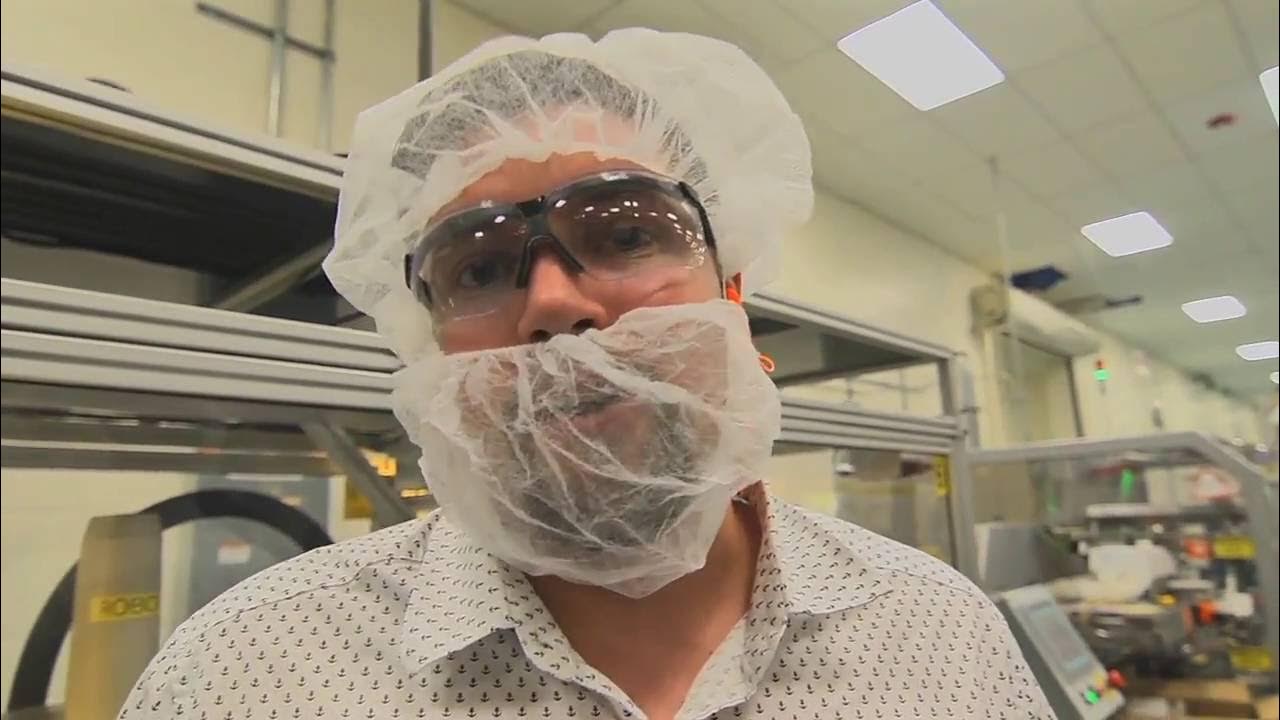AI vs. Humans | Who's better at gunshot detection?
Summary
TLDRIn this engaging quiz show, participants from various backgrounds, including a research engineer, a project manager, a UI/UX designer, and a back-end engineer, compete to identify whether sounds played are real gunshots or not. The script details their reasoning and the outcomes of each round, highlighting the difficulty in distinguishing between real and fake gunshot sounds. The research team's Jae-young emerges as the winner, showcasing the challenge of sound recognition even for those with experience, and hinting at the potential of AI in sound identification.
Takeaways
- 😀 The script is from a quiz show involving participants from different professional backgrounds trying to identify gun sounds from various sources.
- 🎯 The participants include a research engineer, a project manager, a UI/UX designer, and a backend engineer, each with unique experiences and perspectives.
- 👥 The quiz consists of multiple rounds where participants listen to sounds and determine if they are gun shots or not.
- 🔊 Sounds are played one by one, and participants must decide quickly if each sound is a real gunshot or a fake sound mimicking a gunshot.
- 🏆 The competition is fierce, with the research engineer, Jae Young, leading in the first round, correctly identifying seven out of eight sounds.
- 🤖 AI also participates in the quiz, and its performance is compared to that of the human participants, highlighting the capabilities and limitations of AI in sound recognition.
- 🧐 The difficulty of distinguishing real gunshots from fake ones is emphasized, as even experienced participants sometimes struggle with certain sounds.
- 🎵 Background music and sound effects are used to create an engaging atmosphere during the quiz show.
- 📊 Scores are tallied after each round, and the final results show a close competition between human participants and AI.
- 🏆 In the end, the research engineer Jae Young wins the quiz show, demonstrating the impact of experience and context in sound identification.
- 🔑 The script suggests that while AI has advanced capabilities, it may not yet match the top 1% of humans with extensive experience and contextual knowledge in specific sound recognition tasks.
- 🌐 The discussion points to the potential of AI in improving sound recognition in everyday life by providing consistent quality and accuracy in identifying specific sounds.
Q & A
What is the purpose of the experiment described in the transcript?
-The experiment is designed to test participants' ability to distinguish between real and fake gunshot sounds, using audio clips as stimuli.
Who are the participants in the experiment?
-The participants include Jae Young, a research engineer; Hong, a project manager; Lee Yu Jeong, a UI/UX designer with 7 years of experience in FPS games; and Yoon Seung Min, a back-end engineer.
What is Jae Young's background relevant to the experiment?
-Jae Young is a research engineer who has served as a sergeant in the military and has experience with special forces, which might give him an advantage in recognizing gunshot sounds.
What is the role of the back-end engineer Yoon Seung Min in the experiment?
-Yoon Seung Min participates as a contestant in the sound recognition experiment, despite not being familiar with gunshot sounds due to his limited military training.
How many rounds are there in the experiment?
-The transcript describes three rounds of the experiment, with increasing difficulty in distinguishing between real and fake gunshot sounds.
What was the first question in the first round of the experiment?
-The first question in the first round was to determine whether a provided sound clip was a real gunshot sound or not.
What was the result of the first round of the experiment?
-Jae Young correctly identified seven out of eight questions, while AI, Yu Jeong, and Seung Min each identified five, four, and three questions correctly, respectively.
What was the nature of the second round's first question in the experiment?
-The second round's first question involved identifying a sound clip that was described as being similar to a firecracker sound, but was actually a real gunshot sound.
What was the final outcome of the experiment?
-Jae Young from the research team won the experiment, correctly identifying 20 out of 24 questions, while AI scored 15 out of 24, Yu Jeong and Seung Min both scored 13 out of 24, and Hong scored 12 out of 24.
What insights can be drawn from the experiment regarding the recognition of specific sounds like gunshots?
-The experiment suggests that experience and context play significant roles in sound recognition. While AI showed a higher average score, human performance can vary based on conditions and prior knowledge.
What is the potential application of the findings from this experiment?
-The findings could be applied to improve AI's ability to recognize and distinguish specific sounds in various contexts, enhancing the quality and reliability of sound recognition technology.
Outlines

Dieser Bereich ist nur für Premium-Benutzer verfügbar. Bitte führen Sie ein Upgrade durch, um auf diesen Abschnitt zuzugreifen.
Upgrade durchführenMindmap

Dieser Bereich ist nur für Premium-Benutzer verfügbar. Bitte führen Sie ein Upgrade durch, um auf diesen Abschnitt zuzugreifen.
Upgrade durchführenKeywords

Dieser Bereich ist nur für Premium-Benutzer verfügbar. Bitte führen Sie ein Upgrade durch, um auf diesen Abschnitt zuzugreifen.
Upgrade durchführenHighlights

Dieser Bereich ist nur für Premium-Benutzer verfügbar. Bitte führen Sie ein Upgrade durch, um auf diesen Abschnitt zuzugreifen.
Upgrade durchführenTranscripts

Dieser Bereich ist nur für Premium-Benutzer verfügbar. Bitte führen Sie ein Upgrade durch, um auf diesen Abschnitt zuzugreifen.
Upgrade durchführen5.0 / 5 (0 votes)






